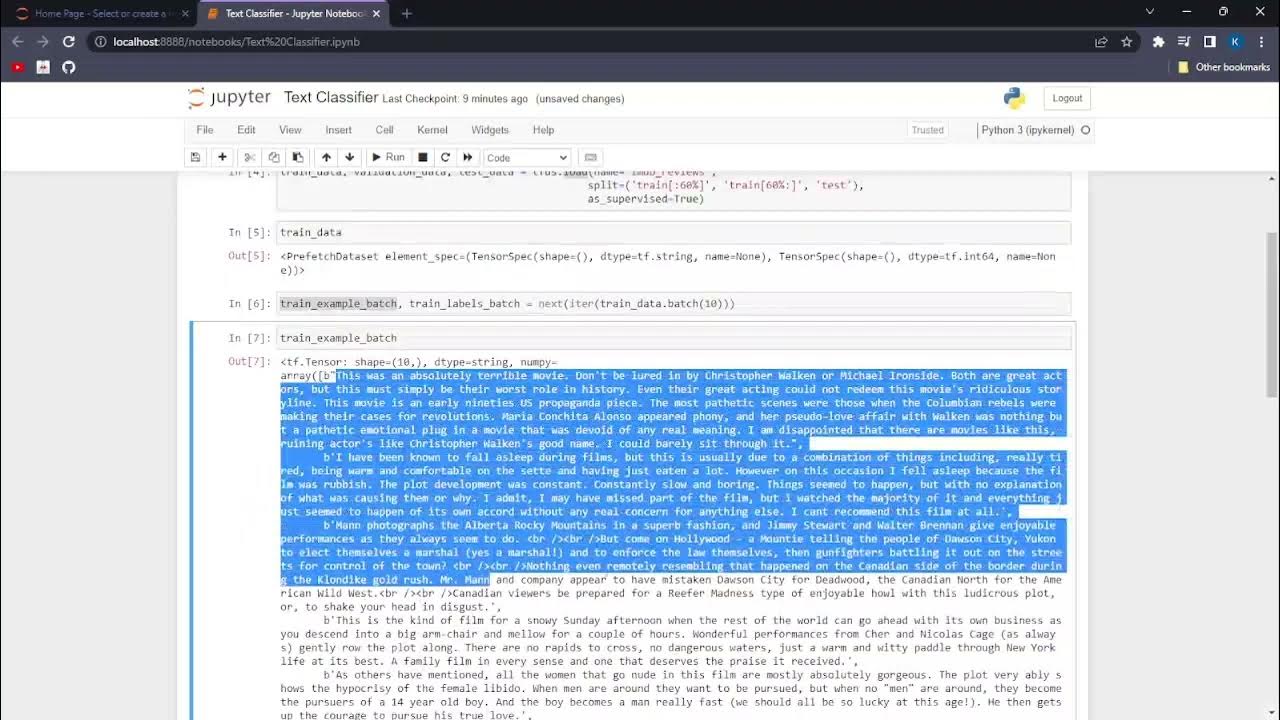Text Classification: AI Techniques and Real-World Applications
Summary
TLDRThis video explores the concept of text classification, explaining how it categorizes raw text into specific classifications such as spam detection or Netflix movie genres. It covers three types of text classification: binary, multiclass, and multi-label. Key techniques include preprocessing, feature extraction, selecting models, and iterating through labeled outputs. Real-world applications such as sentiment analysis, topic categorization, and customer feedback analysis are highlighted. The video also addresses challenges like imbalanced datasets and ambiguous text, offering solutions such as proper labeling and model validation to ensure effectiveness in classifying vast amounts of data efficiently.
Takeaways
- 😀 Text classification involves processing raw text and categorizing it into predefined classifications, such as spam vs. not-spam or comedy vs. drama.
- 😀 There are three main types of text classification: binary (two categories), multiclass (multiple categories), and multi-label (multiple classifications per text).
- 😀 Preprocessing raw text is crucial, and typically done using scripting languages like Python. This involves cleaning the text and making it ready for analysis.
- 😀 Feature extraction converts raw text into numerical representations, often using techniques like word embeddings, although the details can be complex.
- 😀 The choice of model is vital for text classification, with different models such as ChatGPT, BERT, and others tailored for specific classification tasks.
- 😀 After running the model, output labeling is an iterative process, and adjustments to text, feature extraction, or the model might be needed based on the results.
- 😀 Real-world applications of text classification include spam detection, sentiment analysis, topic categorization, and customer feedback analysis.
- 😀 Sentiment analysis helps businesses understand customer emotions (positive, negative, or neutral) through social media posts or feedback.
- 😀 Topic categorization is useful for businesses in automatically classifying customer emails into categories like orders, technical requests, or customer service queries.
- 😀 Challenges in text classification include imbalanced datasets, ambiguous text (e.g., multiple meanings for a word like 'bank'), and ensuring diverse and representative training examples.
- 😀 Best practices include manually labeling training data for accuracy, addressing data imbalance, ensuring a broad range of sentiment examples, and validating the model to account for changing conditions (model 'drift').
Q & A
What is text classification?
-Text classification is the process of taking raw text, such as documents, and funneling it through a computational engine that outputs different classifications, such as spam vs. not-spam emails or different genres of movies on Netflix.
What are the three major types of text classification?
-The three major types of text classification are: binary classification, multiclass classification, and multi-label classification. Binary classification involves two categories, multiclass classification involves multiple categories, and multi-label classification allows for multiple categories to be assigned to a single item.
What is binary classification?
-Binary classification is the simplest form of text classification, where the output is limited to two categories, such as spam vs. not-spam in the email example.
Can you explain multiclass classification?
-Multiclass classification involves categorizing text into one of several distinct categories, such as classifying emails into business-related, customer-related, or order-related types.
What is multi-label classification and why is it more complex?
-Multi-label classification allows a single piece of text to be assigned multiple categories, such as a movie being classified as both 'action' and 'adventure'. It is more complex because it involves multiple categories for one item, which adds to the computational and labeling challenges.
What is feature extraction in the text classification process?
-Feature extraction is the step where raw text is converted into numerical representations using techniques like word embeddings, preparing the text for processing by a classification model.
Why is preprocessing the raw text important in text classification?
-Preprocessing is crucial because it prepares the raw text by removing unnecessary elements such as periods, hyphens, or apostrophes, and standardizes the text for the next stages of classification, ensuring accurate results.
What are some real-world applications of text classification?
-Real-world applications of text classification include spam detection in emails, sentiment analysis for gauging public opinion, topic categorization in customer service emails, and analyzing customer feedback to prioritize issues.
What challenges might arise when working with text classification models?
-Challenges include imbalanced data sets, where one category dominates, ambiguous text that could have multiple meanings, and the need for a diverse spread of training examples to ensure accurate classifications.
How can you address issues with imbalanced data sets in text classification?
-To address imbalanced data sets, it's important to ensure that you have a sufficient and balanced number of examples for each category, which helps the model classify text more accurately without bias.
What is meant by 'drift' in text classification, and why is validation important?
-Drift refers to changes in the real world that may affect how a model classifies text. Validation ensures that the model continues to classify text correctly even as new data or events might alter the context, requiring periodic review and adjustments.
Outlines

Этот раздел доступен только подписчикам платных тарифов. Пожалуйста, перейдите на платный тариф для доступа.
Перейти на платный тарифMindmap

Этот раздел доступен только подписчикам платных тарифов. Пожалуйста, перейдите на платный тариф для доступа.
Перейти на платный тарифKeywords

Этот раздел доступен только подписчикам платных тарифов. Пожалуйста, перейдите на платный тариф для доступа.
Перейти на платный тарифHighlights

Этот раздел доступен только подписчикам платных тарифов. Пожалуйста, перейдите на платный тариф для доступа.
Перейти на платный тарифTranscripts

Этот раздел доступен только подписчикам платных тарифов. Пожалуйста, перейдите на платный тариф для доступа.
Перейти на платный тариф5.0 / 5 (0 votes)






